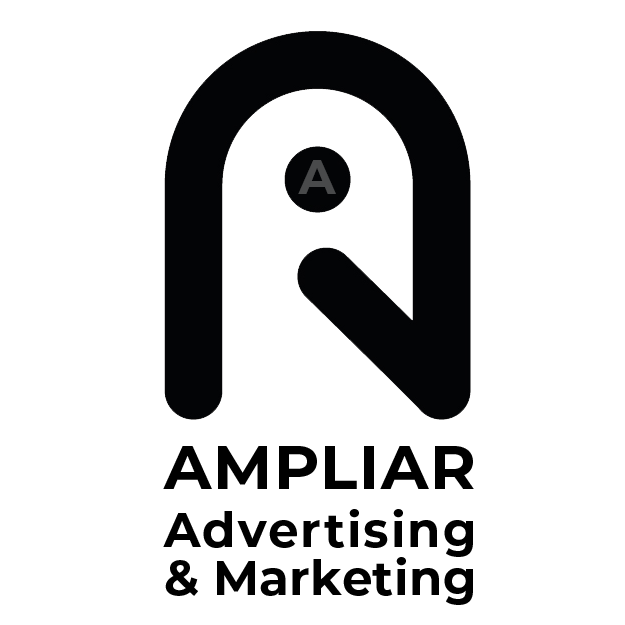If you’re a content marketer, SEO strategist, or a website owner, you know that using heading hierarchy to structure your content is essential. Headings create a roadmap for readers and search engine crawlers to understand what your content is about and how it’s organized. In this post, we’ll cover everything you need to know about heading hierarchy – from understanding the basics of heading hierarchy and why it’s crucial for SEO, to learning best practices and tools for optimization.
We’ll also delve into successful case studies and explore how heading hierarchy optimization can be applied across different platforms like local SEO, e-commerce, content marketing, and paid advertising. Finally, we’ll look at the future of heading hierarchy and how it might evolve in the coming years. Whether you’re new to heading hierarchy or looking to improve your existing practices, read on for an informative guide on structuring your content for easy reading and SEO.

Understanding the Basics of Heading Hierarchy
Heading hierarchy organizes content for a better user experience and aids search engines in understanding content structure. Effectively structured headings ensure that content is scannable and digestible, clarifying the main points and breaking down content into manageable sections. This plays an important role in enhancing the reader’s experience.
By optimizing heading hierarchy, content creators can strike a balance between readability and SEO, which is crucial for a successful marketing strategy. Proper heading hierarchy is the first step towards creating relevant SEO content that serves as the best answer to a user’s search query.
What is Heading Hierarchy?
Heading hierarchy refers to the organization of content using headings. It plays a crucial role in improving content visibility in search results and enhancing the user experience. By structuring content under specific headings, search engine crawlers can better understand the context of the content.
Why is Heading Hierarchy Crucial for SEO?
Proper heading hierarchy plays a vital role in improving search engine rankings by contributing to good content structure. It helps present content clearly and guides search engine crawlers towards relevant keywords. Ultimately, it leads to better search engine results.

The Correct Use of Heading Hierarchy
Incorporating relevant keywords in headings is a vital component of search engine optimization (SEO) and the creation of quality web content. By structuring headings correctly, content visibility and engagement are enhanced, supporting internal linking and improving site structure for a better user experience. Furthermore, well-structured headings not only improve readability but also contribute significantly to SEO, making the content more discoverable and easily understandable by search engine crawlers.
Guidelines for Using Heading Hierarchy
When using heading hierarchy, it’s crucial to optimize titles and subheadings with relevant keywords. Balancing readability with SEO is essential, so avoid unnecessary words in headings while ensuring clarity and conciseness. Effective headings align with the search intent of the audience, contributing to better search engine rankings. By adhering to these guidelines, content creators can create a seamless user experience with improved visibility and engagement.
Common Mistakes to Avoid
When using headings, it’s crucial to avoid overusing them, as this can lead to keyword stuffing and a poor user experience. Additionally, an inconsistent heading hierarchy can confuse search engine crawlers, impacting the discoverability of your content. Using headings solely for design purposes rather than content organization is a common mistake that should be avoided. Neglecting relevant keywords in headings can hinder content visibility in search results, while misleading or irrelevant headings can have a negative impact on the reader’s experience.
Best Practices for Heading Hierarchy
Optimizing titles and subheadings is paramount for effective content marketing. It’s essential to strike a balance between SEO and reader experience when optimizing headings. Creating relevant headings that directly answer search intent is the way forward.
A well-structured heading hierarchy significantly contributes to good content and an excellent user experience. Additionally, effective heading hierarchy plays a crucial role in featured snippet optimization. Ensuring that headings are properly structured can greatly impact the SEO strategy and overall content visibility.
Optimizing Titles and Subheadings for SEO
Including primary and secondary keywords in titles and subheadings is crucial for SEO. Well-optimized headings enhance organic search visibility and click-throughs. Strategic use of anchor text in headings aids in link building and content optimization.
Titles and subheadings should align with target keywords and search intent, contributing to better search engine rankings. This optimization ensures that headings effectively cater to both search engine algorithms and user experience, making it a pivotal aspect of any SEO strategy.
Balancing Readability with SEO
Balancing readability with SEO involves crafting clear, compelling titles and subheadings to engage readers while optimizing for search engines. It’s crucial to strike a balance between user experience and SEO elements in headings to enhance content readability and reduce bounce rate.
Creating headings that address search intent contributes to high-quality content, improving SEO results. By optimizing titles and subheadings, one can achieve great content that resonates well with both readers and search engines.

Tools for Heading Hierarchy Optimization
Utilizing tools for keyword research aids in formulating effective titles and subheadings, contributing to a well-structured heading hierarchy. SEO tools play a vital role in identifying relevant keywords for heading optimization, enhancing the content’s search engine visibility.
On-page optimization tools further refine the heading hierarchy to improve search engine rankings. Clear page titles and meta descriptions, implemented through effective tools, are crucial for content optimization and organic traffic generation. The strategic use of these tools ensures the creation of great content with optimized headings.
Exploring Tools for SEO-friendly Headings
Enhancing user experience is crucial for SEO-friendly headings. Using specialized tools can aid in analyzing and improving heading structures, providing valuable insights into keyword optimization. By optimizing headings, the content becomes more accessible and understandable to both users and search engines.
The right tools not only enhance the overall readability of the content but also contribute to a well-structured and SEO-friendly format, ultimately improving the website’s search ranking and visibility.
Evaluating Tool Effectiveness
Evaluating the effectiveness of tools for headings optimization is crucial in refining the heading hierarchy for improved SEO. The results obtained from SEO tools play a significant role in guiding the enhancements required in the heading structure.
These tools are instrumental in identifying the most relevant keywords for crafting impactful headings, thereby contributing to the overall SEO strategy. By evaluating the effectiveness of these tools, content creators can ensure that their headings are well-optimized to align with the best SEO practices.

Heading Hierarchy Optimization Across Different Platforms
Optimizing the hierarchy of headings across various platforms significantly impacts the visibility and rankings of content. Different platforms require tailored strategies for heading structure optimization, considering factors such as social media, web design, and SEO copywriting.
Consistency in heading optimization is crucial to ensure optimal performance of content across diverse digital platforms such as home pages, landing pages, and blog posts. Embracing this approach is a great way to enhance the effectiveness of a marketing strategy and elevate the relevance of content in Google search results.
Local SEO and Heading Hierarchy
Enhancing regional search results through optimized headings is a crucial aspect of local SEO. Tailoring headings to cater to local search intent significantly improves organic search performance and boosts regional visibility. The effective structuring of headings plays a key role in engaging the local audience, thereby contributing to the overall success of a marketing strategy.
Heading Hierarchy for E-commerce and Content Marketing
E-commerce and content marketing heavily rely on well-structured headings to enhance user experience. The hierarchy of headings plays a pivotal role in conveying information and guiding purchasing decisions.
Well-optimized headings not only contribute to search engine visibility but also significantly impact content engagement. Implementing a strategic heading structure is vital for capturing audience attention, boosting SEO performance, and ultimately driving the desired actions within the e-commerce and content marketing domains.
Paid Advertising and Heading Hierarchy
Paid advertising campaigns greatly benefit from optimized headings to enhance ad relevance and quality score. The effective structure of headings plays a crucial role in influencing ad click-through rates and optimizing conversions. Aligning headings with paid ad content significantly enhances the overall performance of advertising campaigns, contributing to better engagement and results.
The Future of Heading Hierarchy
The evolution of search engine algorithms shapes the future of heading hierarchy. Adaptations to new search trends, user behavior, and digital platforms will drive heading optimization. Anticipating structural changes prepares content for sustainable SEO results, aligning with the evolving landscape of search engine optimization.
As NLP evolves, the strategic use of related keywords and relevant content becomes increasingly crucial. This continuous evolution emphasizes the importance of structured headings in creating an authoritative and informative presence amidst changing search algorithms and user behaviors.
How Might Heading Hierarchy Evolve in the Coming Years?
The future of heading hierarchy depends on user behavior, search intent, and changes in search engine algorithms. It may adapt to new content formats, mobile search trends, and advancements in machine learning and AI. The evolution of heading hierarchy will be shaped by user experience and the ever-changing landscape of search technologies.
Structuring Content for SEO Success
In conclusion, heading hierarchy plays a crucial role in structuring your content for both easy reading and SEO. By using a clear and logical hierarchy of headings, you can improve the readability of your content and make it easier for readers to navigate through your article. Additionally, search engines rely on heading tags to understand the structure and context of your content, which can ultimately impact your SEO rankings.
To optimize your heading hierarchy, ensure that you follow guidelines for using headings correctly and avoid common mistakes. Balancing readability with SEO is key, as you want to provide valuable information to your readers while also incorporating relevant keywords.
There are various tools available to help you optimize your heading hierarchy, so explore and evaluate them to find the ones that work best for your needs. Furthermore, studying successful case studies can provide insights and inspiration for your own heading hierarchy optimization efforts.
As the digital landscape continues to evolve, it’s important to stay updated with any changes or advancements in heading hierarchy practices. By staying ahead of the curve, you can continue to improve your content’s readability, user experience, and SEO performance. Ampliar Advertising and Marketing has been around for 15 years and can help your business shine!

